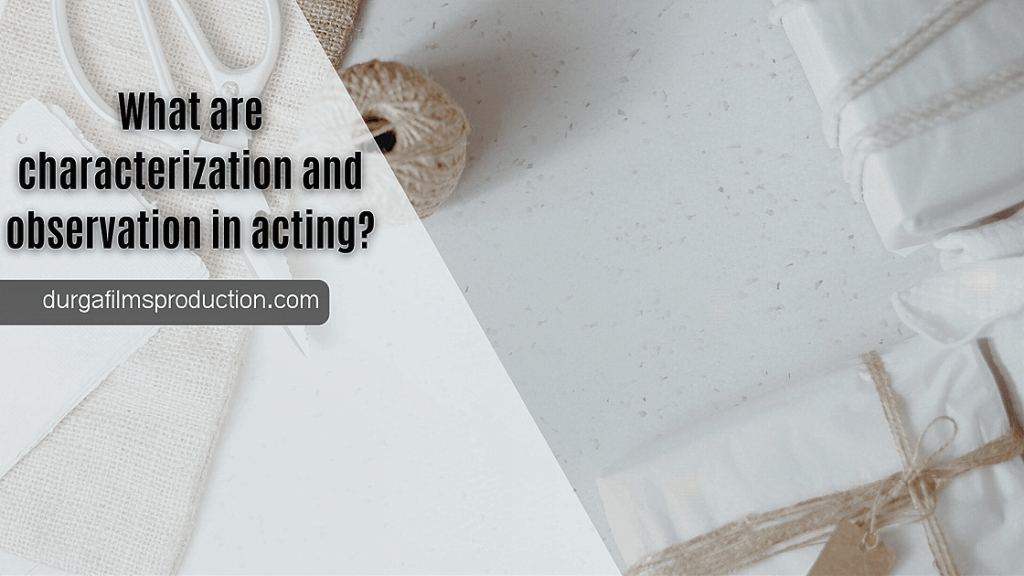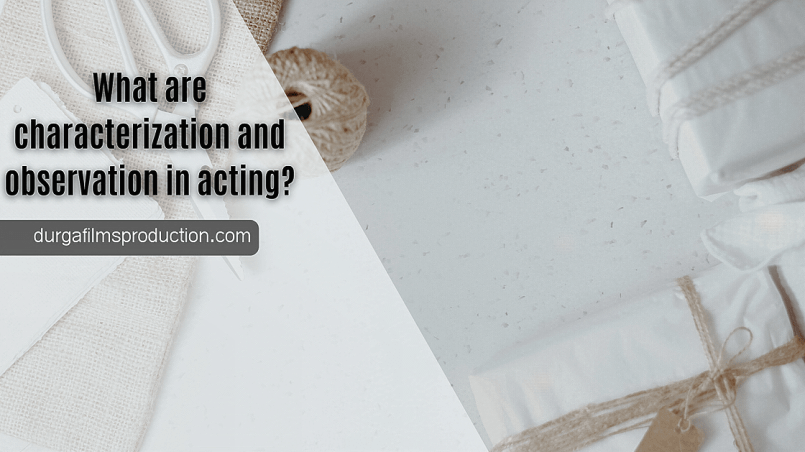We’re going to talk about character and observation in acting today. To be more specific, “characterization” is the act of showing what a certain character is like. For this to work well, the actor needs to change into that character.

Their whole body, not just their face, needs to show that trait in a natural, spontaneous, and unconscious way.
How do you say what something is like?
Voice, movement, and body language are all tools that an actor can use to create a character.
Change is all there is to characterization. To become his character and feel the same emotions as him, the actor must be able to completely let go of himself during the performance. To do this, you have to be that character at that exact moment.
It’s important to note that this kind of character interpretation is different from acting, which is a different skill. Acting is the result of characterization, but acting is not the same thing as characterization because you can act without becoming someone else.
Characterization really lets performers put their own spin on a text’s character and make their performance more personal.
Why is playing a character so important?
This is what the performer must show:
Authentic:
It’s important that the transition seems instinctive, natural, and not planned. If not, it’s called simulation or imitation, which is not acting at all, and the audience won’t believe that everything is coming from the character.
Visual:
Don’t just use your face, use your entire body. Actors try to get to know their characters, which means they have to create a certain image of them to make them stand out. Actors are known for these traits, so the characters they play should be real and clear.
When a character is presented in an authentic way, it means that it was done in good faith, with honesty, and without hesitation. The characteristics that can be seen show that it was done in an artistic way by using the whole body (not only the face).
This must be done by reading and thinking about what the text says. This will help us figure out who the character is and what he’s like, as well as his age, gender, mood, and social status. This study will also help the actor understand his role better so he can play it more realistically.
You can learn about a character not only by reading the text but also by watching other people play similar roles.
What is it to observe?
To be an actor, you have to learn how to move, talk, think, and act like other people. To make characters that seem real, you have to be able to remember what you see and draw from that.
Why does acting require watching?
What I like most about it is that it is simple. You don’t need a special place to practise or a set time. It’s called “observing,” and I’m sure I’m not the first person to tell you about it. But because it’s such an important tool, I think it’s important to say it again.
When you’re on the train in the morning, pay attention to the people around you. Choose one and try to think about it as much as you can. How does this guy act? How old? What is it about him that really makes him stand out? Why did you decide on him? Give three things about this person that make them different from everyone else on the train.
Can you tell what kind of move he’s making? If not, can you think of a match for him? If he is feeling stressed, he might take his shirt off. Choose a play from one of your theatre books when you get home. It could be something you’ve done before or something you’re working on right now. Take whichever character you see first when you open the book.

Try reading a story and picturing A in that part. The farther away you are from the character in the play, the better. For example, let’s say you choose Shakespeare’s “Romeo and Juliet” and your “A” is a man in his 60s who looked poor and was eating peanuts. Read about what happened from his point of view. It just might not work sometimes.
Keep in mind that it’s just an acting exercise meant to help you do more. Sometimes the result is so new, interesting, or beautiful that you might want to keep it in your toolkit. The more you play, the easier it is to build relationships and create unique characters.


